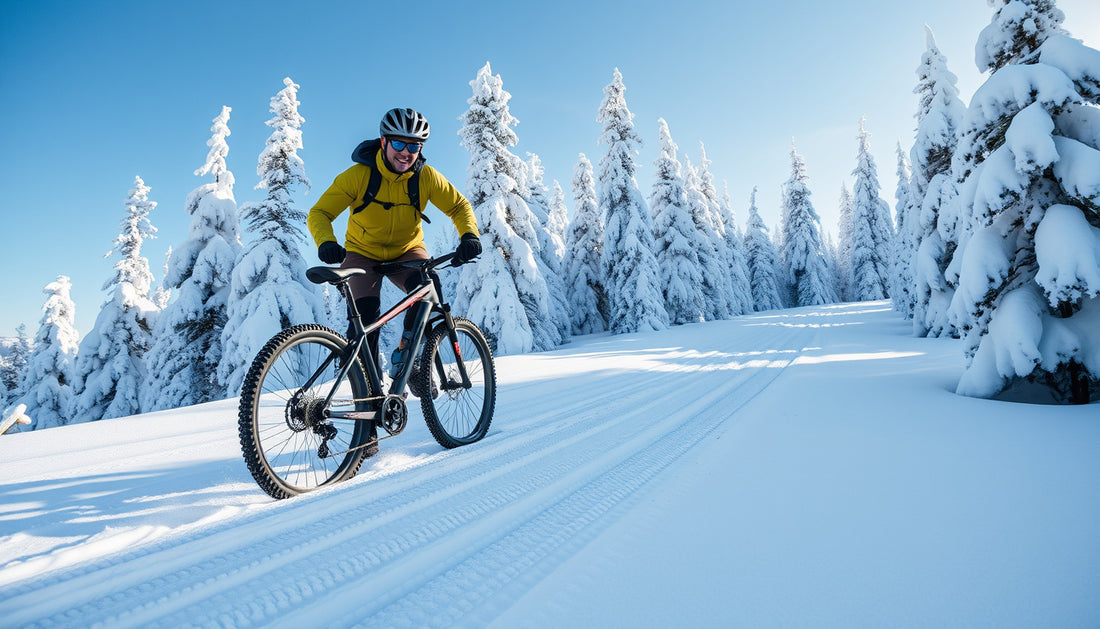
Master the Winter Trails: Essential Mountain Bike Skills for Cold-Weather Riding
Share

As temperatures drop and snow begins to blanket trails, many mountain bikers face a tough decision: hang up their bikes for the winter or push through the cold and explore the magic of winter riding. Riding in winter conditions can be exhilarating, yet it demands a unique set of skills and strategies. Are you ready to embrace the challenge? Whether you're a seasoned rider or just starting, this blog is tailored for you to equip you with essential mountain bike skills for cold-weather riding.
Why Ride in Winter?
Riding in winter not only broadens your biking skills but also offers spectacular views and a peaceful atmosphere that comes with a snow-covered landscape. However, it requires more than just a willingness to brave the cold. Here are some compelling reasons to hit the trails this winter:
- Improved Skills: Winter riding teaches you to handle your bike better on unpredictable terrain.
- Less Crowded Trails: Enjoy the tranquility of nature without the summer rush.
- Physical Fitness: Maintain your fitness level and mental health during the off-season.
- Connection with Nature: Experience the beauty of winter, letting the cold breathe life into your adventure.
Essential Skills for Cold-Weather Riding
To make the most of your winter mountain biking experience, mastering the following skills will enhance not only your performance but also your safety:
1. Bike Handling on Slippery Surfaces
Winter trails often include snow, ice, or mud. Learning to balance is crucial.
- Body Position: Keep your weight back to prevent the front wheel from sliding out.
- Smooth Turns: Use gradual steering inputs to maintain traction.
- Feathering Brakes: Apply brakes lightly and gradually to avoid losing traction.
2. Tire Selection and Pressure Adjustment
Not all tires are created equal for winter riding. Here’s what to consider:
-
Tire Types:
- Studded Tires: Great for icy conditions.
- Wide Tires: Offer more surface area for flotation on snow.
-
Pressure Adjustment: Lower tire pressure increases traction but balance it to avoid pinch flats.
3. Choosing the Right Gear
Dress for success by layering up. The right clothing keeps you warm while allowing freedom of movement.
- Base Layer: Moisture-wicking to keep sweat away.
- Insulation Layer: Fleece or down for warmth.
- Outer Layer: Waterproof and wind-resistant shell.
“Layering is key,” says experienced mountain biker, Sarah Johnson. “You want to stay warm but not overheated. Being comfortable allows you to focus on the ride.”
4. Planning Your Routes
Not all trails are suitable for winter riding. Consider the following:
- Trail Conditions: Look for trails that are packed down and flat.
- Local Websites: Check trail conditions online or with local biking clubs.
- Stay on Paths: Protect the environment by sticking to established trails.
Safety Considerations in Cold Weather
Safety cannot be overstated when riding in winter conditions. Keep these pointers in mind:
- Visibility: Shorter days and cloudy weather mean you need lights and reflective gear.
- Hydration: Cold weather can mask your thirst. Remember to drink water occasionally.
- Know Your Limits: Listen to your body and be prepared to turn back if conditions worsen.
The Payoff: The Joy of Winter Riding
While it may seem daunting at first, the commitment to improving your winter mountain bike skills will pay off. The exhilaration of gliding through fresh snow, mastering icy turns, and feeling the crisp winter air invigorates your spirit and enhances your love for cycling.
“Winter riding can be one of the most rewarding experiences,” explains mountain biking enthusiast, David Reed. “The solitude and beauty of gliding over fresh snow is unparalleled.”
Call to Action
Are you ready to take your mountain biking skills to the next level this winter? Embrace the cold, prepare your bike, and put these essential skills into practice. Remember, the trails may be weathered, but your ability to conquer them isn’t. Join local biking groups or clinics that focus on winter riding skills, and share your experiences with fellow enthusiasts.
Together, let’s master the trails, not only improving our biking techniques but also deepening our connection with the great outdoors. Happy riding!






